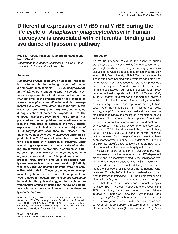摘要
Anaplasma phagocytophilum, an obligate intracellular bacterium, is the aetiologic agent of human granulocytic anaplasmosis (HGA). A. phagocytophilum virB/D operons encoding type IV secretion system are expressed in cell culture and in the blood of HGA patients. In the present study, their expression across the A. phagocytophilum intracellular developmental cycle was investigated. We found that mRNA levels of both virB9 and virB6 were upregulated during infection of human neutrophils in vitro. The antibody against the recombinant VirB9 protein was prepared and immunogold and immunofluorescence labelling were used to determine the VirB9 protein expression by individual organisms. Majority of A. phagocytophilum spontaneously released from the infected host cells poorly expressed VirB9. At 1 h post infection, VirB9 was not detectable on most bacteria associated with neutrophils. However, VirB9 was strongly expressed by A. phagocytophilum during proliferation in neutrophils. In contrast, with HL-60 cells, approximately 80% of A. phagocytophilum organisms associated at 1 h post infection expressed VirB9 protein and were colocalized with lysosome-associated membrane protein-1 (LAMP-1), whereas, VirB9-undetectable bacteria were not colocalized with LAMP-1. These results indicate developmental regulation of expression of components of type IV secretion system during A. phagocytophilum intracellular life cycle and suggest that bacterial developmental stages influence the nature of binding to the hosts and early avoidance of late endosome-lysosome pathway.
- 出版日期2006-3
